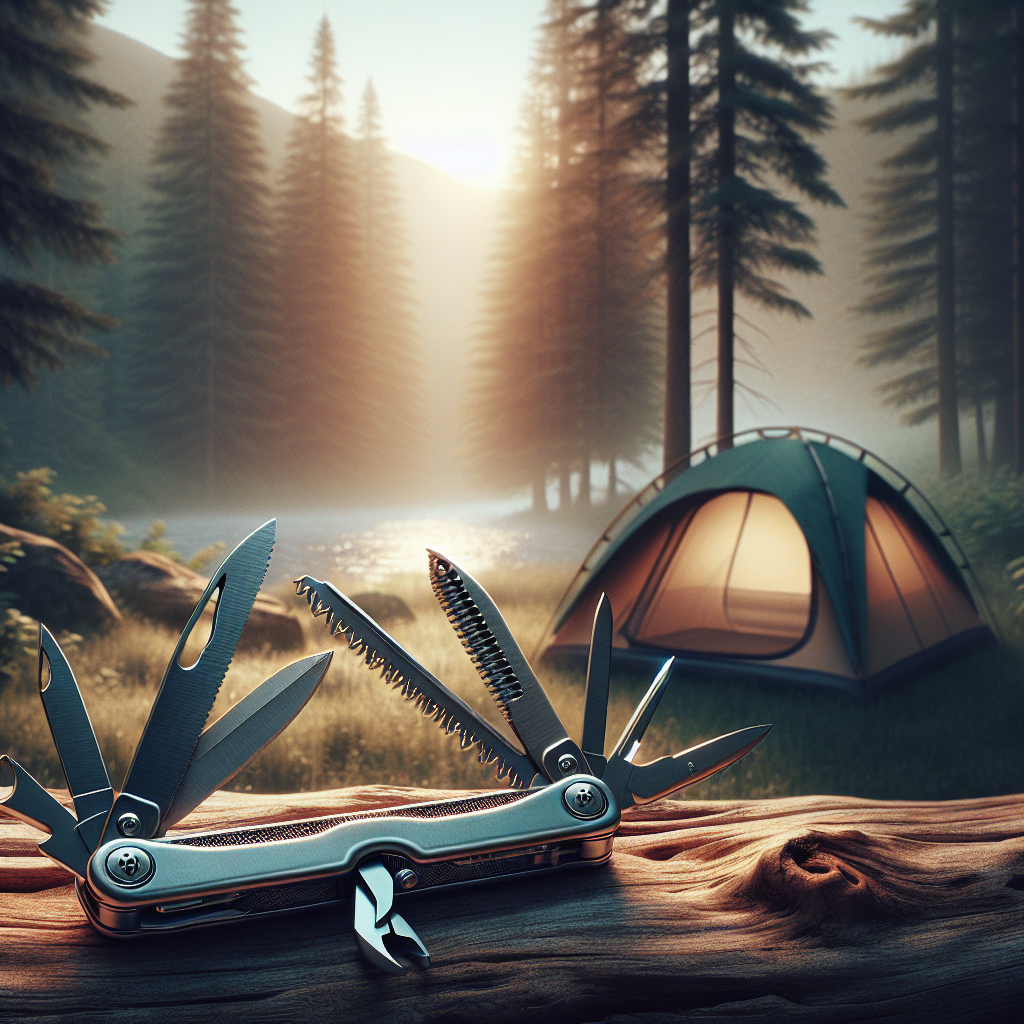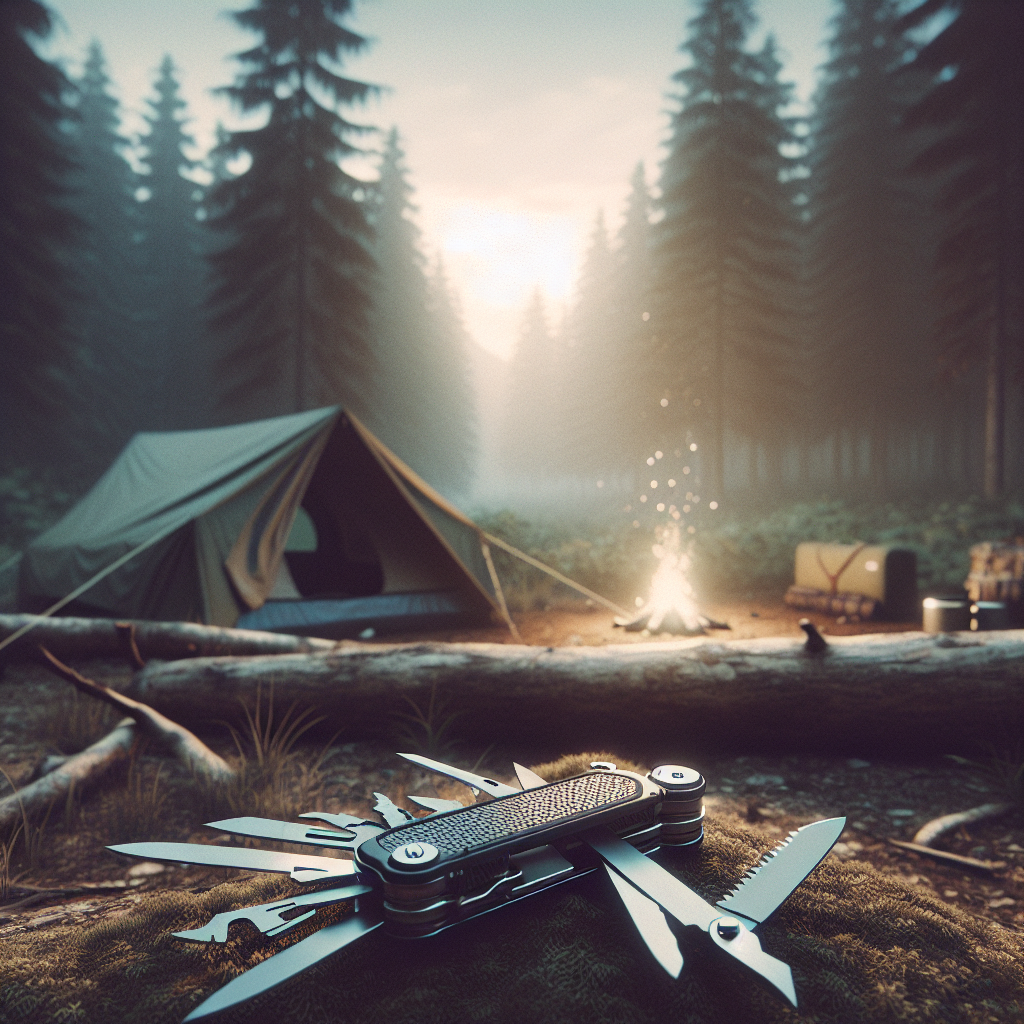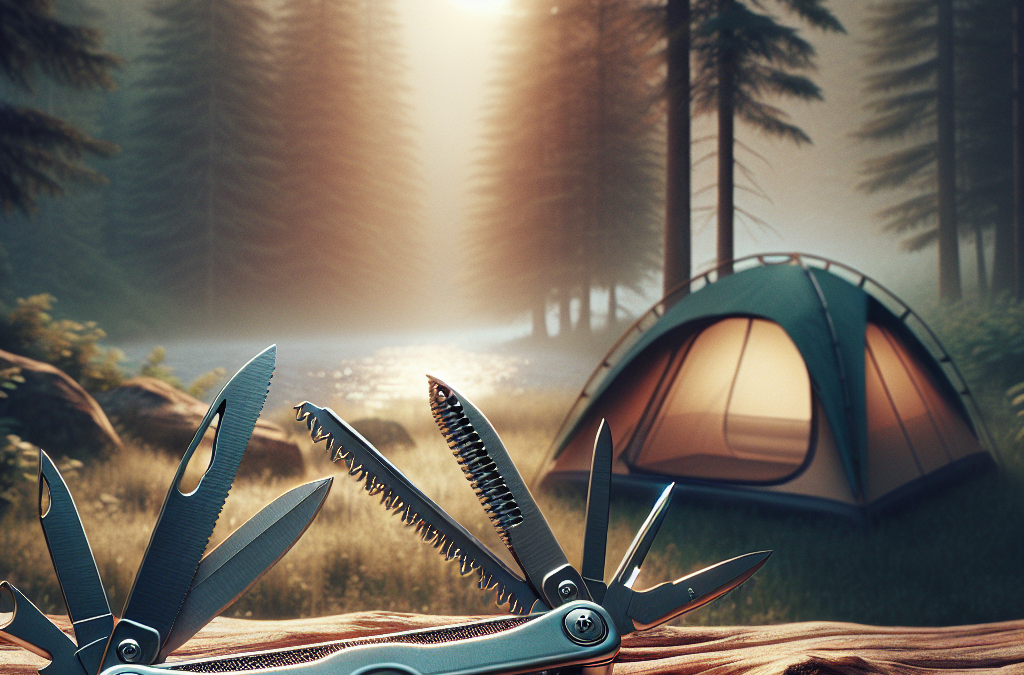You’ve sought solace in the great outdoors, eager to soak in the serenity nature offers. Suddenly, you’re facing an unexpected hiccup – your trusty gear has failed you. “Campsite Repair: Fixing Gear in The Field” is your comprehensive guide to remedying these nuis welcome interruptions and regaining command of your camping experience. Filled with useful tips and advice, this article is a treasure trove for any adventurer wanting to prepare themselves for those unexpected gear mishaps out in the wilderness. So, gear up, and let’s turn you into the go-to repair guru in your camping circle.
Understanding the Importance of Campsite Repair
Whether you are a seasoned camper or new to the thrilling world of camping, it is crucial to understand the importance of campsite repair. When you venture out into the wilderness, you are your first and most vital resource. Your survival and enjoyment depend heavily on the gear you bring along with you and how well you can maintain and repair it.
The role of gear repair in outdoor survival
Your equipment is essentially your lifeline when you are camping or hiking. It ensures your comfort, protects you from the elements, aids in navigation, and can mean the difference between a triumphant or tragic outdoor adventure. Knowing how to repair your gear can extend its lifespan and save you from a potentially dangerous situation.
Benefits of maintaining and fixing your equipment
Regular maintenance and fixing your equipment can prevent critical failures in the field, save you money on replacements, and ensure your gear functions at its optimum level. When you understand the nuts and bolts of your equipment, you also gain a sense of self-reliance that can positively impact your overall outdoor experience.
Principles of Leave No Trace Camping
Leave No Trace camping is founded on respect for nature and its preservation. It encourages campers to minimize their impact on the environment as much as possible. This includes properly maintaining and repairing equipment to avoid unnecessary waste or environmental damage. By adhering to this principle, we ensure that the splendor of nature is preserved for future generations.
Basic Tools for Campsite Repair
Armed with basic knowledge, let’s get down to the tools you need to carry out these repairs.
Must-have tools for campsite repair
Every camper should carry a basic repair kit, which typically includes duct tape, a multi-tool, spare buckles, zip-ties, thread and needle, spare batteries, and glue. These tools can help you fix a wide range of gear malfunctions in the field.
Understanding the use of each tool
Each tool in your repair kit has a specific purpose. Duct tape can mend a range of things from a torn tent to a broken water bottle. A multi-tool can help with tasks like cutting, sawing, or can-opening. Spare buckles and zip-ties can replace broken ones, and a needle and thread can fix torn fabric. Spare batteries are essential for your flashlight or GPS, while glue can seal leaks or mend a loose sole.
How to pack tools efficiently
Packing these tools efficiently is essential to avoid unnecessary weight and to keep your gear organized. Keep the heavyweight tools at the bottom of your pack, near your back, for balance. Use small pouches or zip-lock bags to group items together.

Repairing Tents and Shelters in the Field
Your tent or shelter is your home away from home. Keeping it in top shape is crucial.
Assessing damage in shelters
Before you embark on any repair, it’s essential to assess the damage. The location and nature of the damage on your tent will determine the type of repair that’s needed.
Fixing tears and holes in tents
For small holes or tears, a patch of duct tape on both sides of the fabric can provide a temporary fix. For a more permanent solution, use a fabric patch and adhesive or a sewing kit.
Replacing broken tent poles
Super glue and duct tape could temporarily fix a broken tent pole. For long-term fixes, you could use a splint or replace the pole section.
Dealing with water leakage
Water leakage in a tent can dampen your camping spirits. If it is a seam leakage, seam sealer can fix it. For leaks through the fabric, a waterproof spray could be the solution.
Fixing Backpacks and Bags
Your backpack or bag holds all your essentials, and it’s important to keep it in good condition.
Patchwork and sewing techniques for bags
To deal with rips in your bag, you can use a patch and adhesive. If the damage is more extensive, you could also sew the tear.
Repairing buckles and straps
A broken buckle or strap can render your backpack useless. With a spare buckle and a few minutes, you could replace a broken buckle.
Replacing zippers in the field
For broken zippers, it could be possible to realign the zipper teeth with a multi-tool’s pliers. If this doesn’t work, a safety pin or wire could serve as a temporary zipper.

Handling Cooking Gear Repairs
Your cooking gear enables you to enjoy a hot meal after a long day of hiking or adventure.
Fixing common stove problems
If your stove isn’t igniting, check the fuel source first. The problem could be a blocked fuel line or a dirty burner. Cleaning it often helps.
Dealing with broken or malfunctioning can openers
A multi-tool or pocket knife can be a handy backup if your can opener breaks or malfunctions in the field.
Mending cracks in pots and pans
A crack in a pot or pan can be a headache. However, a metal repair tape can temporarily fix this.
Sleeping Bag and Mattress Repairs
A good night’s sleep can rejuvenate you for a day of adventure. So, maintaining your sleeping gear is crucial.
Fixing tears and holes in sleeping bags
Patches and adhesive, or a sewing kit, can help to mend a hole or tear in your sleeping bag.
Dealing with broken zippers
A broken zipper in your sleeping bag can leave you exposed to the elements. Try moving the slider up and down a few times. If this doesn’t fix it, a safety pin or sew-on snap could serve as a temporary solution.
Repairing air mattresses and foam pads
Holes in air mattresses or foam pads can be temporarily fixed with a patch kit or duct tape. For a burst seam, a seam grip adhesive can offer a more permanent fix.
Clothing Repair Basics
Keeping your clothes serviceable is not only important for protecting you from the elements but also for ensuring your comfort.
Sewing and patchwork techniques for clothing
Knowing basic sewing techniques can help you to repair minor rips or holes in your clothes. For major damage, patchwork might be necessary.
Dealing with damaged waterproof clothing
If your waterproof clothing is leaking, it could be from a tear, or it might need recoating with a waterproofing spray. In case of a tear, a quick fix would be using duct tape or a patch and adhesive.
Fixing common footwear problems
Your footwear is your vehicle in the wild. Broken laces can be replaced with spare ones or cordage. For a detached sole, a powerful adhesive can come to your rescue.
Gadget Repair: Lights, GPS and Other Gear
Your gadgets provide you with essential functionality, like light, navigation, communication, and more.
Replacing batteries in the field
Spare batteries are essential for gadgets like flashlights, GPS, or headlamps. Replacing the batteries in the field can ensure your gadgets don’t let you down when you need them the most.
Dealing with water damage
If you accidentally drop your gadget in water, you can try removing the battery, drying all parts, and letting it air out before restarting it.
Basic electronic gear troubleshooting
Often, basic troubleshooting like restarting the device, checking for loose connections, or replacing batteries can solve gadget issues.
Avoiding Common Repair Mistakes
Repairing your gear in the field requires patience and a bit of knowledge of what not to do.
The right way to use repair kits and tools
Take the time to familiarize yourself with your repair kit and tools. Understanding how each tool works can increase the efficiency of your gear repair and avoid causing further damage.
Common mistakes in gear repair and how to avoid them
Familiarizing yourself with common repair mistakes can prevent you from making them. That includes not applying enough adhesive with a patch, using the wrong thread for sewing, or over-tightening screws and buckles.
Emergency fixes vs. long-term solutions
While emergency fixes can be handy in the field, they should not replace long-term solutions. Once you’re back from your adventure, evaluate all the quick fixes, and consider working on long-term solutions to ensure your gear remains in good condition.
Keeping Equipment in Top Shape
The longevity of your gear largely rests on how well you maintain it.
Routine gear maintenance and inspection
Before and after your camping trip, remember to inspect your gear. Look for signs of wear and tear, corrosion, or damaged parts. Regular maintenance and inspections can prevent sudden equipment failures in the field.
Proper cleaning and storage of camping gear
After each trip, clean your equipment thoroughly before storing it. This prevents moisture, dirt, or pests from damaging your gear and helps keep it ready for the next adventure.
Following manufacturer’s repair guidelines and limitations
Abide by the manufacturer’s guidelines for cleaning, repairing, or replacing parts. This could prevent voiding your equipment’s warranty and can help maintain the gear’s functionality.
In conclusion, understanding the basics of campsite repair and gear maintenance increases your self-sufficiency on the trail. It also extends the lifespan of your equipment and helps you anticipate potential problems before they occur, ensuring your outdoor adventures are safe, enjoyable, and environmentally friendly.

